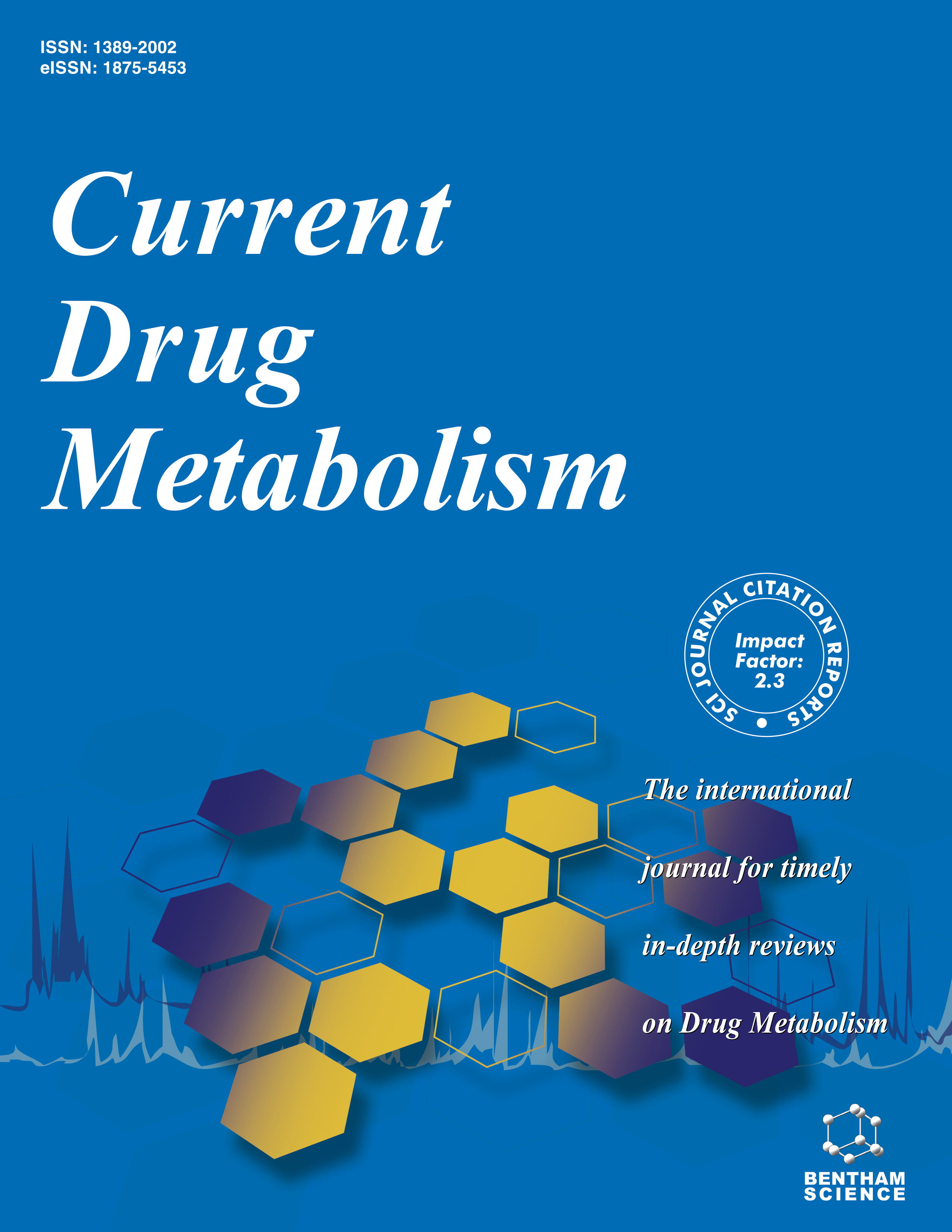- Home
- A-Z Publications
- Current Drug Metabolism
- Previous Issues
- Volume 18, Issue 1, 2017
Current Drug Metabolism - Volume 18, Issue 1, 2017
Volume 18, Issue 1, 2017
-
-
Protein-Protein Interaction (PPI) Network: Recent Advances in Drug Discovery
More LessBackground: The investigation of the cellular components, their interactions and related functions constitute the major conditions in order to understand the cell as an integrated system. More specifically, the Protein-Protein Interactions and the obtained networks are very important in the majority of biological functions and processes, while most of the proteins appear to activate their functionalities through their interactio Read More
-
-
-
Bacteria From Marine Sponges: A Source of New Drugs
More LessBackground: Sponges are rich source of bioactive natural products synthesized by the symbiotic bacteria belonging to different phyla. Due to a competition for space and nutrients the marine bacteria associated with sponges could produce more antibiotic substances. To explore the proactive potential of marine microbes extensive research has been done. These bioactive metabolites have some unique properties th Read More
-
-
-
Recent Advances in Drug Delivery of Polymeric Nano-Micelles
More LessIn clinical studies, drugs with hydrophobic characteristic usually reflect low bioavailability, poor drug absorption, and inability to achieve the therapeutic concentration in blood. The production of poor solubility drugs, in abundance, by pharmaceutical industries calls for an urgent need to find the alternatives for resolving the above mentioned shortcomings. Poor water solubility drugs loaded with polymeric micelle seem to Read More
-
-
-
Advances and Implications in Nanotechnology for Lung Cancer Management
More LessBackground: Lung cancer is one of the most fatal chronic diseases in the field of respiratory medicine. The purpose of this paper is to address the side effects of conventional treatment strategies and to report the findings of till date drug nanocarriers researches performed for lung cancer therapy. This review also highlights the outstanding results of several researches employing pulmonary delivery system of nano-based d Read More
-
-
-
E-MHK-0103 (Mineraxin™): A Novel Nutraceutical with Biological Properties in Menopausal Conditions
More LessAuthors: Lola Corzo, Susana Rodriguez, Ramon Alejo, Lucia Fernandez-Novoa, Gjumrakch Aliev and Ramon CacabelosBackground: Menopause-derived estrogen deprivation and related endocrine factors are linked to some symptoms typical of middle-aged women, such as hot flashes, aches, joint pain, stiffness, depressed mood, bone degeneration, nutritional dysfunction, or difficulty to maintain body mass. Clinical approaches to these problems often involve hormone replacement therapy and other modalities of therapeutic intervention. Ho Read More
-
-
-
Natural Products Combating Neurodegeneration: Parkinson’s Disease
More LessParkinson’s disease (PD) is characterized by neurodegeneration and a progressive functional impairment of the midbrain nigral dopaminergic neurons. The cause remains unknown; however, several pathological processes and central factors, such as protein aggregation, mitochondrial dysfunction, iron accumulation, neuroinflammation and oxidative stress, have been reported. The current treatment method primarily t Read More
-
-
-
Potential Linkage Between Cerebrovascular Diseases and Metabolic Syndrome
More LessCerebrovascular disease (CD) and metabolic syndrome (MetS) are two devastating health dilemma that continues to be a potential contributor to disability and mortality in human population all across the world. Scientific data clearly shows several mechanistic similarities between these two co-existing and interlinked conditions. The linkage exacerbates ongoing patho-physiological condition towards more lethal events. In vie Read More
-
-
-
The Ever Changing Face of Antibiotic Resistance: Prevailing Problems and Preventive Measures
More LessAuthors: Hemlata, Arif Tasleem Jan and Archana TiwariBackground: Antibiotic resistance is a global problem that presents significant risk to human health. Driven by selective pressure of antimicrobial agents, spontaneous mutation, recombination and horizontal gene transfer events, inappropriate antibiotic prescribing and use outside healthcare settings has increased their impact on healthcare system. Increasing risk for human health lead us to study resistance development me Read More
-
-
-
Systematic Review and Meta-analysis of Flibanserin's Effects and Adverse Events in Women with Hypoactive Sexual Desire Disorder
More LessObjective: The efficacy and safety of flibanserin in the treatment of Hypoactive Sexual Desire Disorder (HSDD) is controversial. We reviewed existing evidence on the efficacy and safety of flibanserin in treating HSDD, and performed a meta-analysis of reported effects. Method: Literature search was performed in PubMed, Scopus, and Cochrane library to find all trials on the efficacy of flibanserin in HSDD. Meta-analysis wa Read More
-
Volumes & issues
-
Volume 25 (2024)
-
Volume 24 (2023)
-
Volume 23 (2022)
-
Volume 22 (2021)
-
Volume 21 (2020)
-
Volume 20 (2019)
-
Volume 19 (2018)
-
Volume 18 (2017)
-
Volume 17 (2016)
-
Volume 16 (2015)
-
Volume 15 (2014)
-
Volume 14 (2013)
-
Volume 13 (2012)
-
Volume 12 (2011)
-
Volume 11 (2010)
-
Volume 10 (2009)
-
Volume 9 (2008)
-
Volume 8 (2007)
-
Volume 7 (2006)
-
Volume 6 (2005)
-
Volume 5 (2004)
-
Volume 4 (2003)
-
Volume 3 (2002)
-
Volume 2 (2001)
-
Volume 1 (2000)
Most Read This Month
Article
content/journals/cdm
Journal
10
5
false
en


